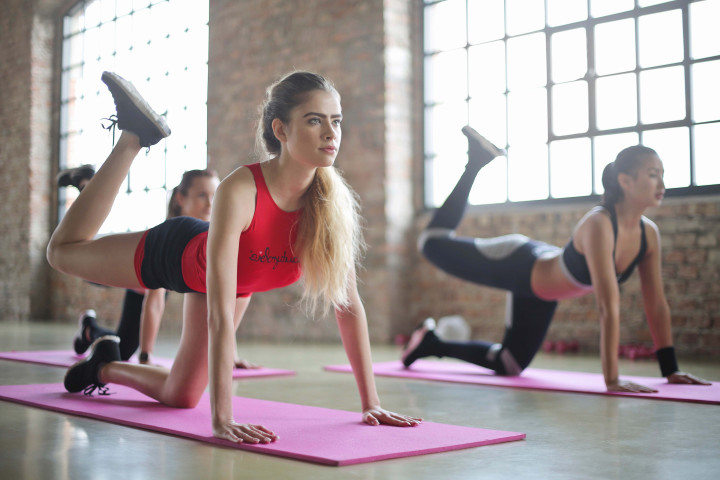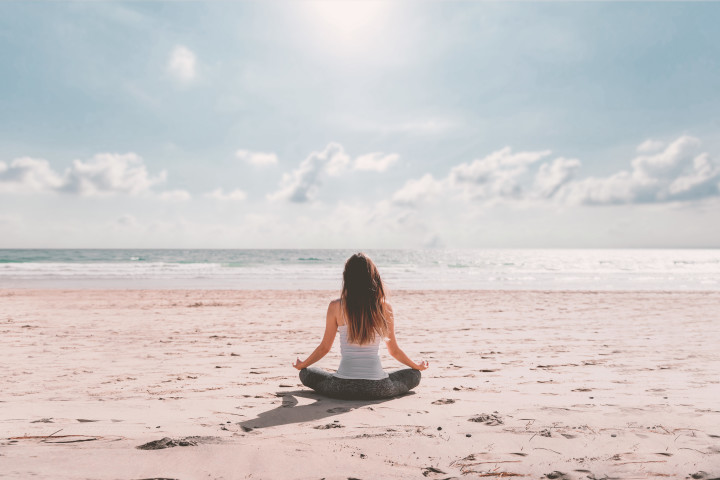Exercise and Addiction Recovery: Why the Two Are Connected

Recovering from addictive substances and activities can be a long and challenging journey. The thought of exercising might feel overwhelming or, at the very least, not a high priority. You may be surprised to learn that incorporating exercise early in addiction treatment could be very beneficial to your recovery. There are many kinds of exercise, including aerobic exercise, resistance exercise, and high-intensity training, among others. Some stages of addiction treatment and recovery are more suited to specific types of exercises than others. And everyone’s fitness level is different! There’s no one-size-fits-all exercise program. What you choose should be tailored to your circumstances and needs. Curious why exercise is beneficial to addiction recovery? Learn more about that and how to incorporate it into your life while in treatment and then recovery, plus some tips on how to start exercising while avoiding major pitfalls. Incorporating Exercise Into Addiction Treatment You may be asking yourself, does exercise in addiction treatment actually help your recovery from addiction? Or is it more tailored to treating common conditions that often occur with addiction, like anxiety and depression? It turns out that exercise is beneficial for all these conditions. Improving anxiety or depression may aid in addiction treatment and vice versa. Aerobic exercise early in addiction treatment may be of particular benefit for addiction treatment. Aerobic exercise increases blood flow throughout your brain and body. It also improves your cardiovascular health. This can be especially useful for treating substances like alcohol, which can decrease blood flow to the brain, resulting in decreased cognitive functioning. Aerobic exercise is also associated with better sleep. Many people in early addiction recovery have trouble sleeping as the brain attempts to find a new baseline and equilibrium. Aerobic exercise may also reduce cravings! Some research shows that as little as 30 minutes of aerobic exercise may reduce addiction cravings. Exercise early in recovery should be taken at a slow pace and preferably under the care of a healthcare professional. Taking these precautions will decrease your risk of injury. This is especially important because those who have been using addictive substances for a long time may have nutrient deficiencies. Unaddressed nutrient deficiencies can increase the likelihood of injury. If you’re entering an addiction treatment program, whether it’s inpatient or outpatient, ask if there is a gym, adventure therapy, dance, or other activities that encourage physical exercise. Exercise and Addiction Recovery After you start exercising in addiction treatment, you’ll want to keep this healthy practice up as you transition into long-term recovery. Breakthrough cravings for your substance of choice are very common, even after you’ve been in recovery for many years. Since aerobic exercise has been shown to decrease cravings, continuing to exercise while in addiction recovery will give you an outlet to cope with breakthrough cravings. Research has also shown that exercise performed while in recovery from addiction prevents relapse. It does this by decreasing negative feelings or emotions and increasing positive feelings or emotions. Addiction to exercise (fitness addiction) can occur, so you’ll want to make sure your exercise program isn’t becoming compulsive and obsessive. Your therapist is a great person to talk to about this. Why Does Exercise Help? If you’re wondering how exercise helps with the recovery process, there are a few theories that may help explain the benefits. While there is still a lot to learn about how the brain responds to various activities and stimuli, there are a few things we do know. One hypothesis that explains how exercise is beneficial for addiction concerns the brain chemical dopamine. Dopamine is the primary chemical involved in the reward pathway of your brain. That’s the same pathway affected by addictive drugs. Both addictive drugs and exercise increase dopamine in the reward pathway. When you stop an addictive substance or activity, there’s a natural drop in dopamine that occurs. Exercise can help stop—or decrease—that drop. Essentially, the drop in dopamine and resulting negative feelings are less than they would be if you didn’t exercise. Dopamine isn’t the only brain chemical that increases while exercising. Beta-endorphins are another type of brain chemicals that exercise releases. Endorphins are opioid chemicals released by your body that produce a sense of well-being. They also play a role in decreasing pain or discomfort. The endorphins released while exercising are often attributed to what people call the “runners high.” Early in recovery, feelings of dysphoria (“blah” feelings) and restlessness are common. The release of endorphins can help manage these feelings and potential relapses. 3 Tips for Incorporating Exercise Into Your Recovery One of the biggest mistakes people make when they start exercising for the first time in a while is going too hard too quickly. Maybe you’ve had the experience of going to the gym after a long period of not going and jumping back into your routines and the weights you lifted when you exercised regularly. The next morning you roll out of bed because your body is so sore it’s difficult to move! Not only does this strain the body, but overdoing it the first time back decreases the likelihood you’ll return anytime soon. 1. Set an Exercise Goal That Is ½ Your Ability Start off by planning to do about half of what you think you can do without causing too much soreness. So if you think you could walk two miles, make a goal of walking one mile. This will increase your inner confidence that you can accomplish something (AKA self-efficacy). Starting off slow also will ensure you’ll feel like working out again the next day. 2. Hydrate Hydration is often gets overlooked, but proper water intake is essential for your body and muscles to work the way they need to! If you’re someone who sweats a lot, you’ll also want to ensure you’re replacing electrolytes by drinking a low-sugar sports drink or Pedialyte® throughout your workout. 3. Listen to Your Body It’s always wise to listen to your body and what it’s telling you during a workout. Pushing yourself to the
5 Unique Ways to Have More Energy

You are clean and sober so, you should be feeling on top of the world. You should be full of energy. You should be jumping out of bed at 6:00 am, no alarm clock necessary. You have so much energy that one might even call you over productive. You are basically a living breathing Disney character. This is how life goes when you are in recovery, right?!?!? Wrong! More often than not, someone who is new to recovery experiences overwhelming bouts of fatigue. Your body, mind, and spirit have gone through shock. You were dependent on a substance that, for many people, was helping you function or even get out of bed. So how do you raise those energy levels? If the first thing that came to mind was a pot of coffee, 2 Monster energy drinks, and a bag of sugary candy, PLEASE read on! 1. Tap Your Thymus Did you just start tapping around the top of your leg? Not even close! Your thymus is located at the top middle part of your chest, just under your collarbone. It is called by many the “happiness point\” on your body because it is the organ that controls your lymphatic system which is responsible for rid your body of toxins. Lightly tapping the area boosts energy, relieves stress, increases strength, and triggers the production of T-Cells which keep your immunity up to fight off anything from the common cold to a nasty flu virus. Try tapping it for 20-30 seconds while breathing deeply for an instant energy boost. 2. Drink Some Matcha… At 10:30 AM Can’t survive without your java in the morning? Time to reach for something green. Matcha is a finely ground powder of specially grown and processed green tea leaves. It has a quarter of the caffeine that coffee has but, unlike your morning cup of joe, it will not give you the caffeine spike just to drop your energy 3-4 hours later leaving you running for your second cup. Matcha gives you a sense of calm alertness not to mention, it boosts your mood and metabolism. Need that caffeine fix as soon as your eyes open? Try and wait until 10:30 am. Studies prove that cortisol levels spike between 8:00-9:00 AM, and during this time your body isn’t able to process caffeine as effectively. Waiting until 10:30 AM can maximize your morning buzz. 3. Make Your Happy List I hate naps! You know how everyone says, “just take a quick power nap and you will feel so much better!” If by quick power nap you mean go to sleep for the next 3 hours and wake up not knowing what time it is or how the heck you are going to get to bed at a reasonable hour, then yes, I’m awesome at naps. If it’s 3:00 during a workday and, I’m hitting an afternoon slump, I take a 15-minute break and bust out my calendar. I look at the next few weeks and what I have going on that brings me enjoyment. Next, I make a list of possible outfits I want to wear, a dish or recipe that I want to bring to a friend’s house to watch football on Sunday, or I look at the blank spaces in my schedule and plan out going to the movies or catching up with a friend I haven’t seen in a while. I find the excitement of seeing all the good times ahead to be an instant endorphin booster! 4. Stop and Smell the Rosemary When you are ready for bed, it’s time to sip on the chamomile tea and spray your sheets with a little bit of lavender. When you need some pep in your step, consider taking in a couple whiffs of rosemary. Rosemary is one of the essential oils that is stimulating to the body. Scholars in ancient Greece used to wear wreaths of rosemary around their head to boost their brain power. Whether it’s fresh from the garden or a little bottle of the essential oil, just a few breaths in can instantly trigger alertness and invigorate your senses. 5. Pump Some Iron and Eat it Too! It seems counterproductive to go to the gym when you are tired but, exercise strengthens circulation and heart muscles so, it gives more energy to your body. On some of my laziest days, I make myself go to the gym in the morning. Although I may be grumbling the whole way there and telling myself, “30 minutes and I’m done”, I’ve found that my morning workouts give me sustained energy throughout the day. If you find you are constantly in a state of exhaustion, you could have an iron deficiency. Iron is essential for producing hemoglobin, which carries oxygen to your body’s cells, where it is used to produce energy. Try filling your daily meals with leafy green veggies, dried beans, and red meats. Who knew a little steak could give you an energy boost when you can’t get your body moooooovin’. Listen, I know that some winter mornings it’s impossible to get out of bed when it’s pitch black outside. At times, that sun beaming in your window at 5:45 in the summer can make you wish it was winter. Instead of going for the usual boosters to skyrocket you into your day, why not try one of the above suggestions. The only thing you’ve got to lose is your mid-day caffeine crash and, I’ve got a sinking feeling it won’t be missed.





